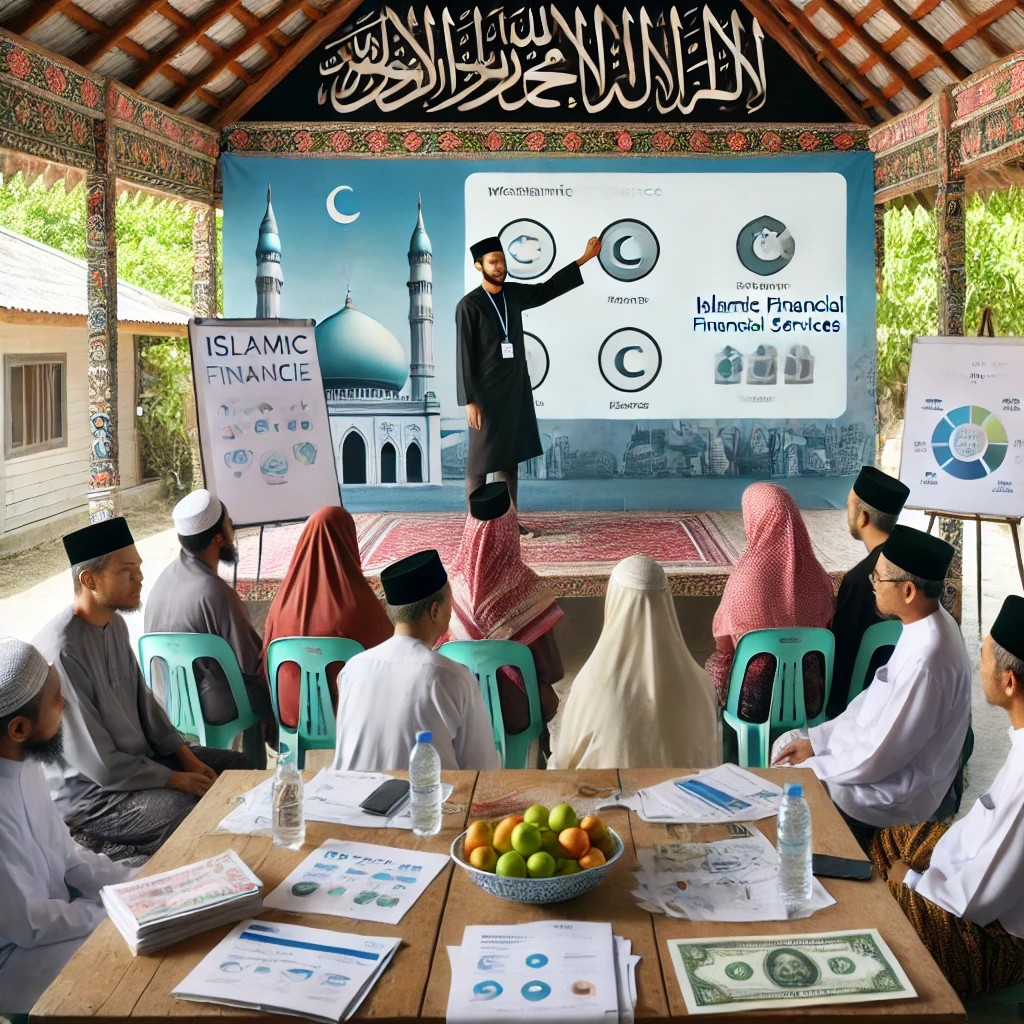Promoting Sustainable Innovation Through Islamic Financial Literacy and Inclusion in Thailand's Five Southern Border Provinces
Islamic Financial Literacy and Inclusion in the Five Southernmost Provinces of Thailand
คำสำคัญ:
Islamic Financial Literacy, Sustainable Innovation, Financial Inclusion, Islamic Finance, Southern Border Provincesบทคัดย่อ
Objective: The purpose of this study is to evaluate the present level of Islamic financial literacy and inclusion of Muslims in five southern border provinces of Thailand as well as to analyse how they could influence financial decision-making and economic behaviour.
Methodology: This study examines Islamic financial literacy and participation of Muslims in Thailand’s five southernmost. A mixed-methods research design was employed, using questionnaires to collect quantitative data from Muslim sample and semi-structured interviews to gather qualitative data from workers in organisations that are associated with Islamic finance.
Research findings: Based on the findings, respondents had basic Islamic financial knowledge but struggled with complex concepts. Despite awareness of Islamic financial services, there was a negative perception due to perceived similarities with conventional banks. Overall, financial literacy was neutral to positive. Additionally, over 50% of the participants were unable to access Islamic financial services. Key barriers comprised a lack of trust, high costs, and insufficient documentation, highlighting the need for improved education and tailored financial products.
Contributions: This research contributes to the corpus of knowledge by gathering a significant amount of data on the patterns of Islamic financial inclusion and literacy and how they relate to Thailand's Islamic financial sector. Considering that there is a Muslim minority in Thailand, this information could be used to encourage economic growth in the larger community and to advertise business opportunities to all demographics. Additionally, this research adds to the body of literature by illuminating the significance of Islamic finance in expanding financial access in Thailand and its potential to strengthen the nation's financial market.
เอกสารอ้างอิง
Abdullah, Md. F., Hoque, M. N., Rahman, Md. H., & Said, J. (2022). Can Islamic financial literacy minimize bankruptcy among Muslims? An exploratory study in Malaysia. SAGE Open, 12(4). https://doi.org/10.1177/21582440221134898
Abdullah, Z., Saleh, S., & Mujiyati (2021). Determinant of Islamic Financial Inclusion in Digital Era: Cross-Province Analysis. An-Nisbah: Jurnal Ekonomi Syariah, 8(1), 59-80.
AFI. (2024). Islamic finance and financial inclusion: AFI members' perspectives. https://www.afi-global.org/wp-content/uploads/2024/04/Islamic-Finance-Financial-Inclusion.pdf
Aisyah, I., & Saepuloh, D. (2019). The implementation of Islamic financial literacy through
"Kencleng" program in school. In 2nd International Conference on Islamic Economics, Business, and Philanthropy (ICIEBP) (pp. 148–157). KnE Social Sciences.
Alfarisi, M. F., Agestayani, & Delfiani, S. (2020). The impact of Islamic economics and finance courses on Islamic financial literacy. Iqtishadia, 13(2), 197–215.
Bank of Thailand. (2020). Financial access survey of Thai households 2020. https://www.bot.or.th/content/dam/bot/documents/en/research-and-publications/reports/financial-access-survey-of-thai-household/fin_access_survey_hh_full_report_2020_en.pdf.
Cheumar, M., Mohammed Fisol, W. N., & Ngoh, B. (2017). Managing credit and investment risks of Islamic cooperatives in Thailand: A case study of Ibnu Auf Cooperative Limited. International Journal of Muamalat, 1(1), 1–17.
Kamarni, N., Handra, H., & Anshori, M. (2022). The Financial Inclusion of Islamic Banking for Low-Income Communities: Case Study in West Sumatera. Jurnal Ekonomi dan Bisnis Islam, 8(1), 32-53.
Kandji, M. (2024). Islamic Finance and Financial Inclusion: Theoretical benchmarks. International Journal of Business and Management Invention, 13(5).
OECD. (2023). OECD/INFE 2023 International Survey of Adult Financial Literacy. OECD Business and Finance Policy Papers (No. 39). OECD Publishing.
Pattani Economy. (2019, January 22). jam-nuuan mút-sà-lim nai bprà-têt tai. [Number of Muslims in Thailand]. https://pattanieconomy.wordpress.com/2019/01/22/%E0%B8%88%E0%B8%B3%E0%B8%99%E0%B8%A7%E0%B8%99%E0%B8%A1%E0%B8%B8%E0%B8%AA%E0%B8%A5%E0%B8%B4%E0%B8%A1%E0%B9%83%E0%B8%99%E0%B8%9B%E0%B8%A3%E0%B8%B0%E0%B9%80%E0%B8%97%E0%B8%A8%E0%B9%84%E0%B8%97%E0%B8%A2/
Robson, C. (2011). Real world research: A resource for users of social research methods in applied settings (3rd ed.). Wiley.
Rozikin, A. Z., & Sholekhah, I. (2020). Islamic Financial Literacy, Promotion, and Brand Image Towards Saving Intention in Sharia Bank, IQTISHADIA, 13(1), 95-106.
Sarntisart, S., & Pholsorn, A. (2018). Islamic Financial Institutions and Economic Growth in the Three Southern Border Provinces. Journal of Management Sciences, 35(1), 27-50.
Suwarsi, A. A., Sharfina, A. G., & Anggraeni, A. (2022). Portrait of MSMEs’ Islamic financial literacy and the impact on business development. Jurnal AFKARUNA, 18(1), 207–233.
Trianto, B., Rahmayati, Yuliaty, T., & Sabiu, T. T. (2021). Determinant factor of Islamic financial inclusiveness at MSMEs: Evidence from Pekanbaru, Indonesia. Jurnal Ekonomi dan Keuangan Islam, 7(2), 105–122. https://doi.org/10.20885/jeki.vol7.iss2.art1
Yamane, T. (1967). Statistics, an introductory analysis (2nd ed.). Harper and Row.
Yunus, D., Rodoni, A., Amilin, & Prasetyowati, R. A. (2021). The influence of demographics and religiosity factors on Islamic financial literacy. Inferensi Jurnal Penelitian Sosial Keagamaan, 15(1), 91–116.

ดาวน์โหลด
เผยแพร่แล้ว
รูปแบบการอ้างอิง
ฉบับ
ประเภทบทความ
สัญญาอนุญาต
ลิขสิทธิ์ (c) 2024 วารสารอิสลามศึกษา มหาวิทยาลัยสงขลานครินทร์

อนุญาตภายใต้เงื่อนไข Creative Commons Attribution-NonCommercial-NoDerivatives 4.0 International License.
บทความทุกเรื่อง ที่ได้รับการตีพิมพ์ในวารสารอิสลามศึกษาเป็นแนวคิดของผู้เขียน มิใช่เป็นความคิดเห็นคณะผู้จัดทำและมิใช่ความรับผิดชอบของคณะวิทยาการอิสลาม กองบรรณาธิการไม่สงวนสิทธิ์การคัดลอก แต่ให้มีการอ้างอิงแสดงที่มา



